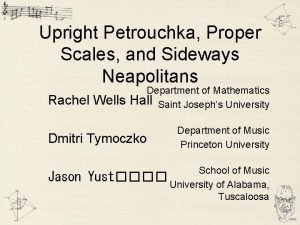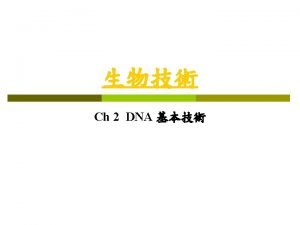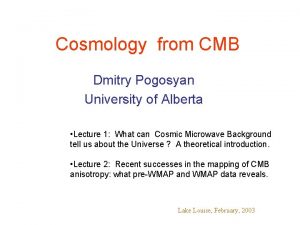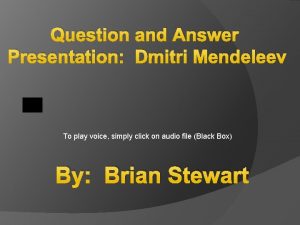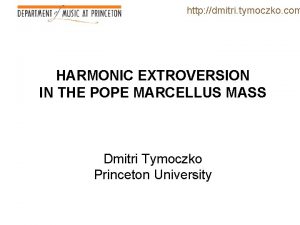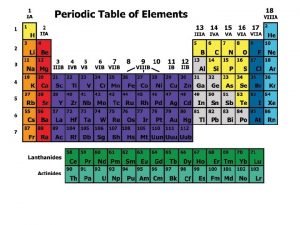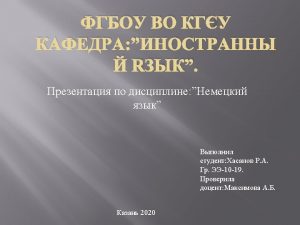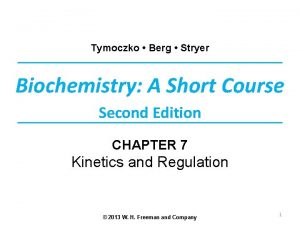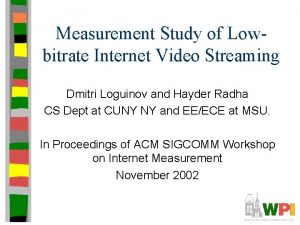http dmitri tymoczko com A STUDY ON THE

































- Slides: 33

http: //dmitri. tymoczko. com A STUDY ON THE ORIGINS OF HARMONIC TONALITY Dmitri Tymoczko Princeton University

http: //dmitri. tymoczko. com WHEN DID FUNCTIONAL TONALITY ARISE? • Lowinsky: early 16 th century (Frottola, etc. ) • Fetis, Dalhaus: early 17 th century (Monteverdi) • Bukofzer: late 17 th century (Corelli) • Gauldin: sometime after Bach • Answers span more than 200 years!

http: //dmitri. tymoczko. com SOURCES OF DISAGREEMENT • Functional tonality is not as a single unified system, but a complex array of idiomatic features that developed extremely gradually. • Contemporary theorists resist using later (“anachronistic”) theoretical terms to describe earlier music. – Functionality was developed by composers in an implicit and embodied way, long before it was explicitly described by theorists.

http: //dmitri. tymoczko. com A CORPUS-BASED APPROACH • Roughly 1, 000 pieces from 1450 -1850 – Dufay to Brahms (plus rock) – Approximately 120 chords/piece (120, 000 total) • “Roman. Text” files and XML scores – Using Myke Cuthbert’s (very cool) music 21 • Balance of breadth and depth • Mostly Ionian mode

http: //dmitri. tymoczko. com A CORPUS-BASED APPROACH

http: //dmitri. tymoczko. com IMPORTANT METHDOLOGICAL POINTS (IMPs) • In my work, I use symbols like I or I 6 as uninterpreted primitives identifying harmonic structures and a bass: – There is no implication that these sonorities are the same or even related. • In Renaissance music I try to identify almost all triadic vertical sonorities – Hardly ever label something a “passing chord” • I try to be stingy about identifying modulations – Require any key changes be accompanied by an explicit cadence

http: //dmitri. tymoczko. com OTHER IMPS • All analyses can be automatically redone to check for analyst bias – e. g. by counting every triad as a chord – Eliminating modulations altogether • We might be interested in a tonal center that is different from that intended by the composer or experienced by contemporaneous listeners. – e. g. it might be that the “Phrygian tonic” gradually started to act like the “dominant-in-Aeolian, ” but that the behavior predated the conceptual recognition of the change. – A “phrygian tonic” that (a) always appears as a major triad, and (b) always moves downward by fifth is acting like a dominant. – Zarlino (IV: 30)

http: //dmitri. tymoczko. com FINDINGS I • Purely “modal” music (e. g. Josquin) already exhibits several features of what we think of as functional tonality. – Preference for I and V • Including a relative favoring of I 6 and fairly strong disfavoring of vi 6 – proto “rule of the octave” • Signs that I 6 is considered closely related to I. – Inversions are leapt-to and leapt-from only in the context of progressions like I-I 6 -V (or IV-IV 6 -I …) – Origins of root functionality? – Preference for fourth motion in the bass – Preference for “strong” progressions

http: //dmitri. tymoczko. com FINDINGS I

http: //dmitri. tymoczko. com FINDINGS I

http: //dmitri. tymoczko. com FINDINGS I

http: //dmitri. tymoczko. com FINDINGS I • Early on, cadential formulae strongly resemble important functional progressions – Very robust preference for ending on root 3 position chords – 6 chords are less stable than ! chords – Bass voice is not “inessential” • There is no “pure modality”

http: //dmitri. tymoczko. com FINDINGS II • Functionality is originally an Ionian mode idiom – Early functionality features the subdominant (IV-I) and dominant (V-I) cycles. – Often involves IV as a predominant – Eventually becomes highly complex. ii IV or IV

http: //dmitri. tymoczko. com FINDINGS II • “Rudimentary tonality” – Appears in popular, homophonic genres. • Frottola, Dalza, Encina, etc. (Petrucci, 1504– 1508) – Mostly root position chords – Strong sense of tonal center – I, IV, and V by far the most prevalent sonorities • IV and the subdominant/predominant continuum – No distinctively functional ii or vi – No obvious signs of inversional equivalence – Not so dissimilar from Carter family • Appears alongside other, less functional organizational schemes. – Willaert as case study

http: //dmitri. tymoczko. com FINDINGS II Frottole I, 48, Micha (Petrucci, 1504)

http: //dmitri. tymoczko. com FINDINGS II (Petrucci, 1508)

http: //dmitri. tymoczko. com FINDINGS III • From 1500 -1680 one sees an extremely gradual transition toward functional tonality – Not possible to draw a sharp line between “tonality” and “modality” • Corollary: there is no unified language called “modality” – Instead a continuous shading between more and less functional procedures – Different idioms in different modes! • In particular, functional practices begin to influence Ionian mode polyphonic music by the mid-16 th century (esp. Palestrina, Lassus, Victoria). – – IV appears as a distinguished third sonority I 6 increasingly becomes the default harmonization of ^3 V tends more and more to go to I Often pieces will be fairly functional in their Ionian-mode sections, but less so when they emphasize other scale degrees.

http: //dmitri. tymoczko. com FINDINGS III

http: //dmitri. tymoczko. com FINDINGS III

http: //dmitri. tymoczko. com SUMMARY

http: //dmitri. tymoczko. com THE TENDENCY HISTOGRAM

http: //dmitri. tymoczko. com FINDINGS IV • The harmonic cycle is the default scheme: I [vi (IV or ii)] vii° or V I • The harmonic cycle gets built backward along the circle of fifths from dominant to prepredominant. – First, the dominant increasingly goes to I. – Then ii chord emerges in the early (or mid-) 17 th-century. vii° or V I ii)] vii° or V I

http: //dmitri. tymoczko. com FINDINGS IV

http: //dmitri. tymoczko. com FINDINGS IV

http: //dmitri. tymoczko. com FINDINGS IV • The harmonic cycle is the default scheme: I [vi (IV or ii)] vii° or V I • The harmonic cycle gets built backward along the circle of fifths from dominant to prepredominant. – First, the dominant increasingly goes to I. – Then ii chord emerges in the early 17 th-century. – The vi chord emerges as a pre-predominant only in the 18 th-century. vii° or V I ii)] vii° or V I I [vi (IV or ii)] vii° or V I

http: //dmitri. tymoczko. com FINDINGS IV • The harmonic cycle is the default scheme: I [vi (IV or ii)] vii° or V I • The harmonic cycle gets built backward from dominant to pre-predominant. – First, the dominant increasingly goes to I. – Then ii chord emerges in the early 17 th-century. – The vi chord emerges as a pre-predominant only in the 18 th-century. • Prior to that, it often goes directly to V

http: //dmitri. tymoczko. com FINDINGS IV • Lots of other 17 th-century developments – Beginning of the vi-I 6 idiom – ^1–^2–^3 gets harmonized as I-vii° 6 -I 6 • In Monteverdi, Morley, etc. , it is still I-ii-I 6 – i 6 replaces III in minor – Development of sequences – Etc.

http: //dmitri. tymoczko. com SUMMARY • Transition to functionality is extremely gradual, taking ~200 years • Evolution involves three processes: – Loose statistical tendencies become much stricter rules – Unification of separate syntactical systems: • Incorporation of popular Ionian-mode idioms • Homogenization of the cadential system and early phrase techniques • Disappearance of indigenous Phrygian, Mixolydian, Aeolian, Dorian, techniques in favor of patterns based on Ionian – Extension of proto-functional idioms • Harmonic cycles become more complex – Begin with rudimentary I-IV-I, I-V-I, and are gradually embellished with secondary chords like predominants • Idioms

http: //dmitri. tymoczko. com WHAT DOES IT MEAN FOR ANALYSIS? • Don’t be afraid to draw on tonal concepts when looking at 16 th-century music! Lassus, Lamentationes Hieremiae Prophetae (5 v)

http: //dmitri. tymoczko. com WHAT DOES IT MEAN FOR ANALYSIS? • Don’t be afraid to draw on tonal concepts when looking at 16 th-century music! Palestrina, Tu Es Petrus (5 v)

http: //dmitri. tymoczko. com PEDAGOGY • A big subject!

http: //dmitri. tymoczko. com ANSWERING DIFFERENT QUESTIONS • When do we first find the subdominant and dominant cycles? – Lowinsky: early 16 th century (Frottola, etc. ) • When do we start to see the disappearance of the modes, as well as the first appearance of the supertonic predominant? – Fetis, Dalhaus: late 16 th/early 17 th centuries (Gastoldi, Cavalieri, Morley, etc. ) – NB: Monteverdi not exceptionally functional • When do we find the first thoroughly functional music (including sequences)? – Bukofzer: late 17 th century (Lully, Corelli) • When does modern “textbook harmony” (complete with the standard treatment of the vi chord) appear? – Gauldin: sometime after Bach

http: //dmitri. tymoczko. com/Origins. Of. Tonality. pptx Thank you!
 Upright sideways
Upright sideways Dmitri tymoczko
Dmitri tymoczko Dmitri tymoczko
Dmitri tymoczko Dmitri tymoczko
Dmitri tymoczko Dậy thổi cơm mua thịt cá
Dậy thổi cơm mua thịt cá Cơm
Cơm Dr tymoczko
Dr tymoczko Krushnic
Krushnic Dmitri mihhailov
Dmitri mihhailov Dmitri mihhailov
Dmitri mihhailov Dmitri pogosian
Dmitri pogosian In 1869, dmitri ivanovich mendeléev
In 1869, dmitri ivanovich mendeléev Dmitry mendeleyev
Dmitry mendeleyev What did dmitri mendeleev do that set him apart? *
What did dmitri mendeleev do that set him apart? * How many siblings did dmitri mendeleev have
How many siblings did dmitri mendeleev have Dmitri mihhailov
Dmitri mihhailov Sofia semyonovna marmeladova
Sofia semyonovna marmeladova Dmitri krioukov
Dmitri krioukov Desmos graphing calculator
Desmos graphing calculator Tegurda avaldis
Tegurda avaldis Http //mbs.meb.gov.tr/ http //www.alantercihleri.com
Http //mbs.meb.gov.tr/ http //www.alantercihleri.com Http //siat.ung.ac.id atau http //pmb.ung.ac.id
Http //siat.ung.ac.id atau http //pmb.ung.ac.id Hát kết hợp bộ gõ cơ thể
Hát kết hợp bộ gõ cơ thể Slidetodoc
Slidetodoc Bổ thể
Bổ thể Tỉ lệ cơ thể trẻ em
Tỉ lệ cơ thể trẻ em Voi kéo gỗ như thế nào
Voi kéo gỗ như thế nào Chụp phim tư thế worms-breton
Chụp phim tư thế worms-breton Bài hát chúa yêu trần thế alleluia
Bài hát chúa yêu trần thế alleluia Các môn thể thao bắt đầu bằng tiếng chạy
Các môn thể thao bắt đầu bằng tiếng chạy Thế nào là hệ số cao nhất
Thế nào là hệ số cao nhất Các châu lục và đại dương trên thế giới
Các châu lục và đại dương trên thế giới Công thức tiính động năng
Công thức tiính động năng Trời xanh đây là của chúng ta thể thơ
Trời xanh đây là của chúng ta thể thơ
